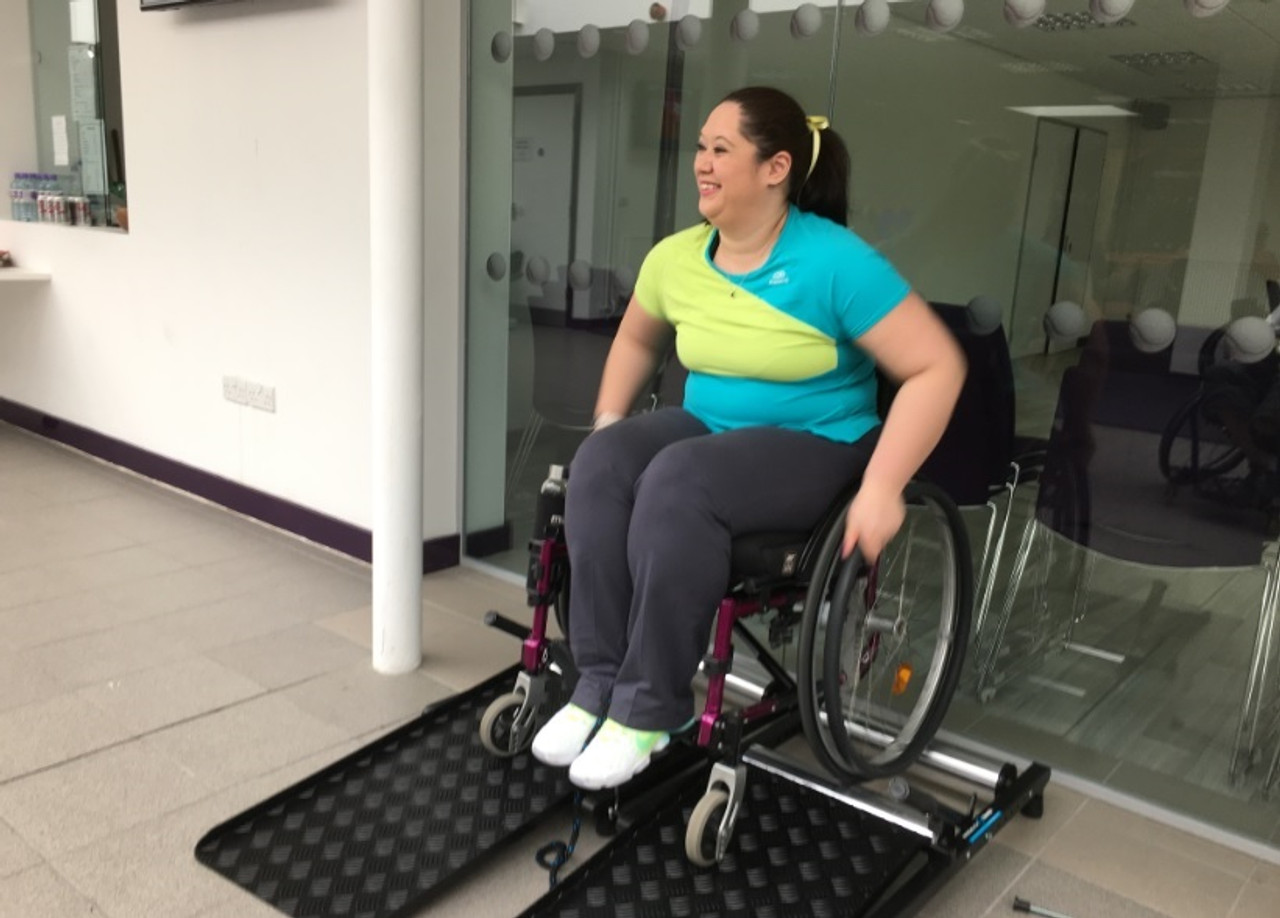How to Lose Weight in a Wheelchair - Diet and Exercise Strategies for Wheelchair Users
Posted by Living Spinal on Sep 15th 2025
How to Lose Weight in a Wheelchair - Diet and Exercise Strategies for Wheelchair Users
Losing weight while using a wheelchair comes with unique challenges. Limited mobility often means fewer calories burned during the day, and this can make traditional weight loss strategies less effective. But with the right diet, fitness routine, and specialized equipment like the Invictus Active Wheelchair Training Roller, wheelchair weight loss is both realistic and sustainable.
This guide will cover proven approaches to losing weight in a wheelchair, including nutritional strategies, exercise options, and how adaptive equipment can transform your fitness journey.
Losing Weight in a Wheelchair: The Basics
Weight loss always comes down to the balance of calories consumed versus calories burned. For wheelchair users, daily energy expenditure is usually lower, so success requires a focused plan:
- Diet adjustments to reduce calorie intake without sacrificing nutrition.
- Upper-body and cardio-focused workouts to increase calorie burn.
- Consistency with routines and lifestyle habits to maintain progress.
Unlike one-size-fits-all weight loss advice, wheelchair users need customized strategies. Adaptive equipment plays an important role by making strength training, cardio, and rehabilitation exercises more accessible and effective.
Weight Loss for Wheelchair Users Through Nutrition
Diet is the foundation of weight management. Since energy needs are lower, nutrient-dense foods are essential.
What to eat:
- Lean proteins: chicken, fish, tofu, legumes.
- High-fiber vegetables: broccoli, spinach, zucchini, carrots.
- Complex carbs: quinoa, oats, sweet potatoes, brown rice.
- Healthy fats: avocados, nuts, seeds, olive oil.
What to avoid:
- Processed snacks and fried foods.
- Sugary drinks like soda and juice.
- Refined grains such as white bread and pastries.
Pro Tip: Pairing high-fiber foods with protein helps you feel full longer, making it easier to stay within your calorie range.
Wheelchair Weight Loss Tips for Portion Control
Wheelchair users often need fewer daily calories, so portion control is critical. Here are strategies that work:
- Smaller plates: A visual trick to prevent overeating.
- Pre-portion snacks: Avoid eating straight from the bag.
- Mindful eating: Slow down, chew thoroughly, and recognize when you’re satisfied.
- Track intake: Use a calorie-tracking app for accountability.
Over time, portion awareness can make a significant difference in wheelchair weight loss success.
Best Diet for Wheelchair Users to Lose Weight
The most effective diet for wheelchair weight loss is not about restriction but balance. A sustainable plan includes:
- Protein with every meal to preserve upper-body muscle.
- Vegetables at least twice a day for fiber and nutrients.
- Smart carbs for energy before workouts.
- Hydration — drinking water before meals can reduce cravings.
Meal Example:
- Grilled chicken breast, quinoa, roasted broccoli, and a drizzle of olive oil.
- Water with lemon on the side.
Exercise for Wheelchair Weight Loss and Fitness
Diet creates the foundation, but exercise is where you accelerate results. Cardiovascular workouts help burn calories and improve endurance. Options include:
- Wheelchair sports: basketball, tennis, or racing.
- Manual Hand Cycles: great for cardio training.
- Pushing your wheelchair outdoors: vary speed for interval-style training.
- Seated aerobic routines: use resistance bands, light weights, or music-driven workouts.
- Specialized Wheelchair Equipment: Adaptive tools like the Invictus Trainer provide wheelchair users with safe, targeted exercise options that replicate gym-quality workouts. Unlike generic fitness gear, this specialized equipment is designed to accommodate seated training, support full-body engagement, and make wheelchair weight loss more effective and sustainable.
Where the Invictus Trainer Fits In:
The Invictus Trainer allows you to perform cardio and strength workouts in one piece of equipment. You can adjust resistance, replicate real-world movements, and safely challenge your upper body without leaving your chair. This makes it one of the most effective ways to create a structured wheelchair weight loss program at home.
How Wheelchair Users Can Burn Calories With Strength Training
Strength training is often overlooked in weight loss, but it’s essential. Building lean muscle boosts your resting metabolism, meaning you burn more calories even at rest.
Exercises to try:
- Seated push-ups on stable surfaces.
- Resistance band chest presses and rows.
- Dumbbell shoulder presses.
- Core rotations with medicine balls.
Nutrition and Weight Loss for Wheelchair Users
Nutrition is not only about calorie control, it’s about supporting performance, recovery, and overall well-being.
- Protein timing: Have protein within an hour after workouts to support muscle repair.
- Anti-inflammatory foods: Berries, fatty fish, and leafy greens help reduce joint strain.
- Hydration: Essential for energy and circulation, especially if mobility is limited.
Wheelchair Fitness and Weight Management
Staying consistent is the hardest part of any weight loss journey. Here’s how to stick with it:
- Set weekly goals: For example, 3 cardio sessions and 2 strength sessions.
- Track progress: Keep notes on workouts, weight changes, and energy levels.
- Mix it up: Alternate sports, outdoor pushes, and Invictus Trainer workouts to stay motivated.
- Celebrate small wins: Improved endurance or lifting heavier resistance counts as progress.
Healthy Eating for Wheelchair Weight Loss Success
Planning ahead is one of the most powerful strategies for wheelchair weight loss:
- Meal prep once or twice a week to avoid quick, unhealthy choices.
- Stock healthy snacks like cut veggies, nuts, or protein shakes.
- Balance treats: Allow occasional indulgences in moderation to stay motivated.
Practical Weight Loss Strategies for Wheelchair Users
Wheelchair weight loss is not about quick fixes but long-term strategies:
- Start small with manageable diet changes.
- Build exercise gradually, using adaptive equipment like the Invictus Trainer.
- Stay accountable with tracking and support.
- Focus on overall health, not just the scale.
By combining healthy eating habits with adaptive exercise solutions, wheelchair users can achieve their goals and build a healthier, stronger body.

